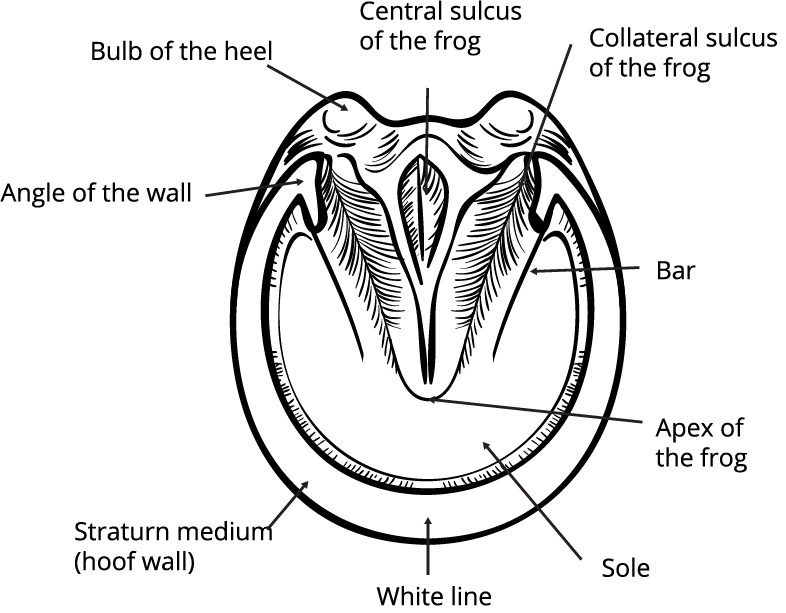Hoof Armor® Ingredient is Antimicrobial and Grows Thicker, More Elastic Hoof
In case you’re not familiar with it, Hoof Armor is an adhesive coating originally designed to protect against wear and chipping. For many years, that was all there was to it. Hoof Armor by itself (no horseshoes or boots) has been used to prevent excessive wear somewhere, every week, for endurance rides of 50, 75 or 100-miles as well as all performance disciplines and everyday trail riders. Hoof Armor works well to protect against wear and abrasion, but I always thought there was more functioning on a molecular level I couldn’t see.
The present formula, the sixth, is as safe as I can make it for horses and the people who are applying it. It is an epoxy base which is similar to the plastic milk jugs you see in the stores and also similar to the linings of metal fruit and vegetable cans which you don’t see. Obviously, this formula was approved by the FDA for use in contact with food. Another ingredient is Kevlar™ which is an inert material that you could probably eat with no serious effects, although it is not recommended. Another ingredientis a natural one made from non-GMO plants and used in food and skin care. All as safe as possible.
Then, there was a horse that was going to be put down for White Line Disease so, as a last resort, a farrier slathered Hoof Armor over the infected areas three times over a period of two months and cleared it up. Another trial cleared up White Line Disease with two applications over 8-weeks applied by the farrier. Then there was a veterinarian at the San Diego Zoo who used Hoof Armor to treat toenail canker on an elephant. More trials proved that, not only Hoof Armor could treat White Line Disease, it would also prevent it.
Research has shown an ingredient in Hoof Armor to be an effective antimicrobial: Inactivation of bacteria can be as brief as 30 seconds and, it could safely and completely inhibit the growth of bacteria such as Salmonella, E. coli and Listeria.
The success with White Line Disease led to trials of treating Thrush and as a preventative for horses that were historically prone to Thrush. These trials are on-going.
Now, further research has proven this ingredient to have additional benefits.
(Sorry, I can’t provide references without revealing the proprietary ingredient.)
This research leads me to propose that Hoof Armor not only be used to prevent excessive wear on the bottom of the hooves; not only as a treatment and preventative against infections over all the hoof surfaces; but as a hoof conditioning agent that is safer than anything on the market. I would suggest the application of Hoof Armor with every trim as an integral part of a continual and progressive hoof care development plan. Hoof Armor can be used with horseshoes to protect the sole like a pad, except it will not grow out with the hoof wall or allow dirt to enter from the back. Hoof Armor can also be used with hoof boots as additional protection in case the boots come off or to prevent the hooves from excessive moisture and abrasive particles inside the boot.


